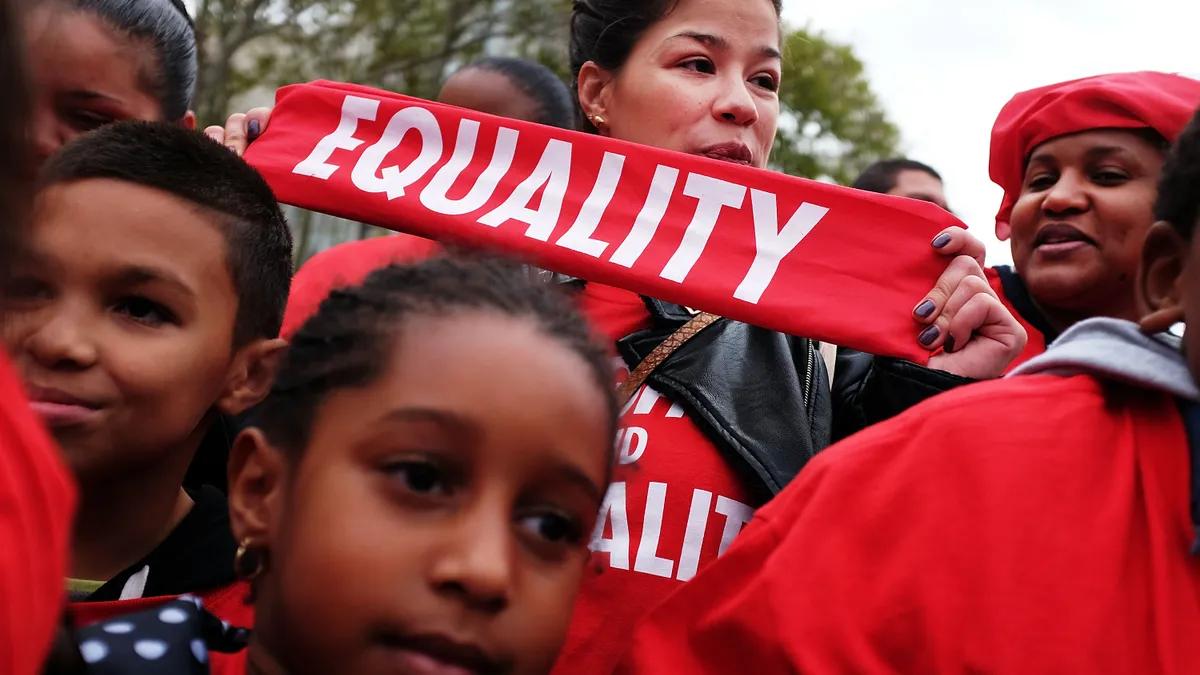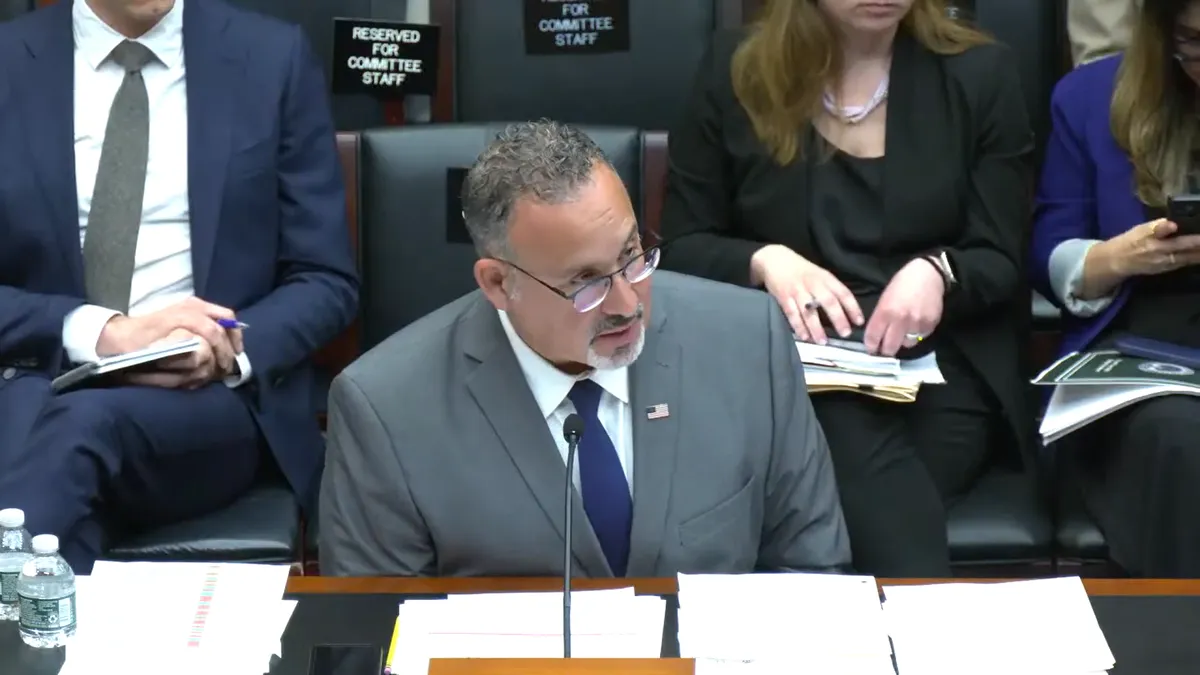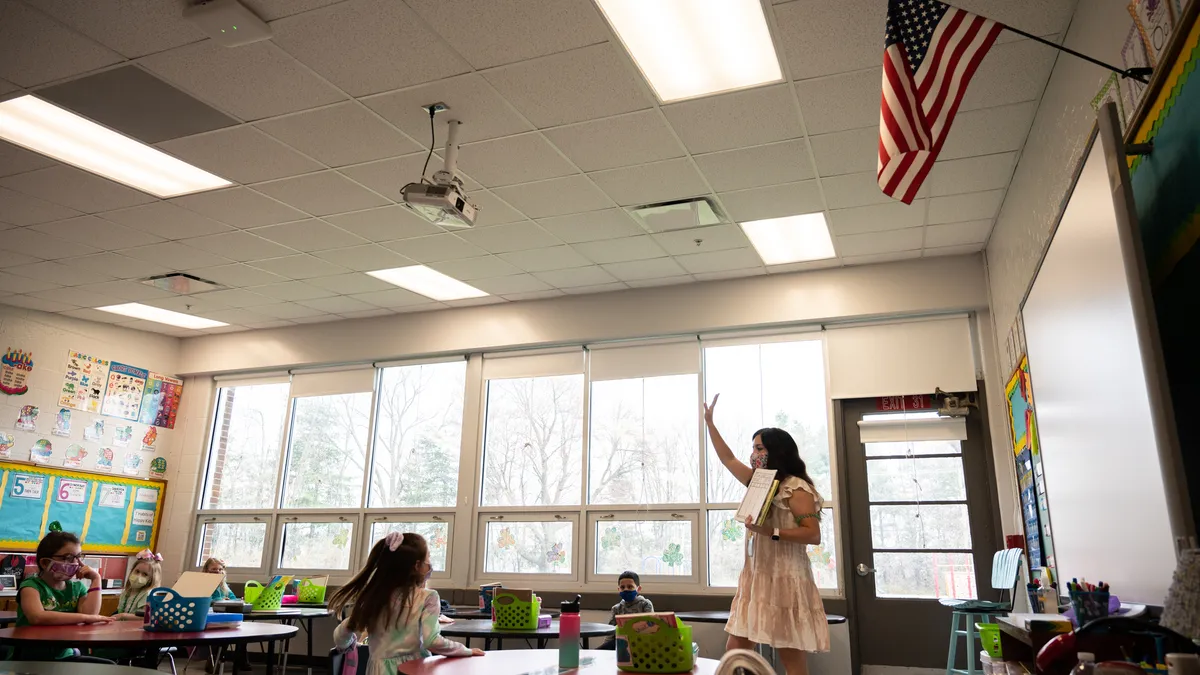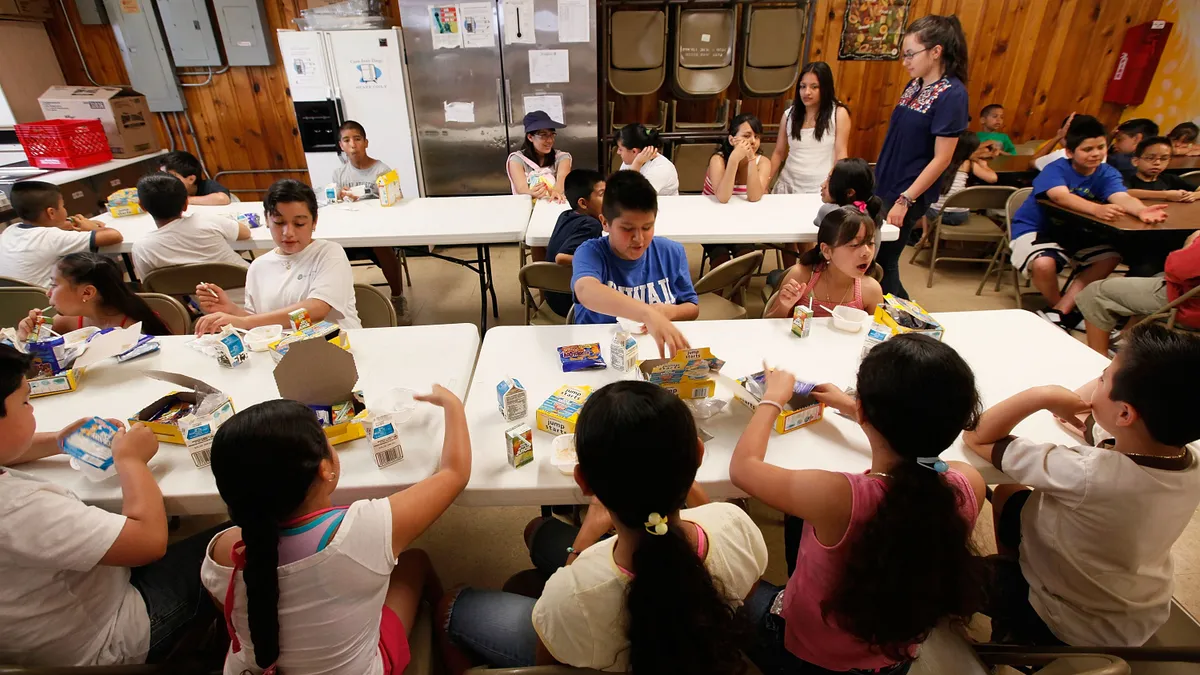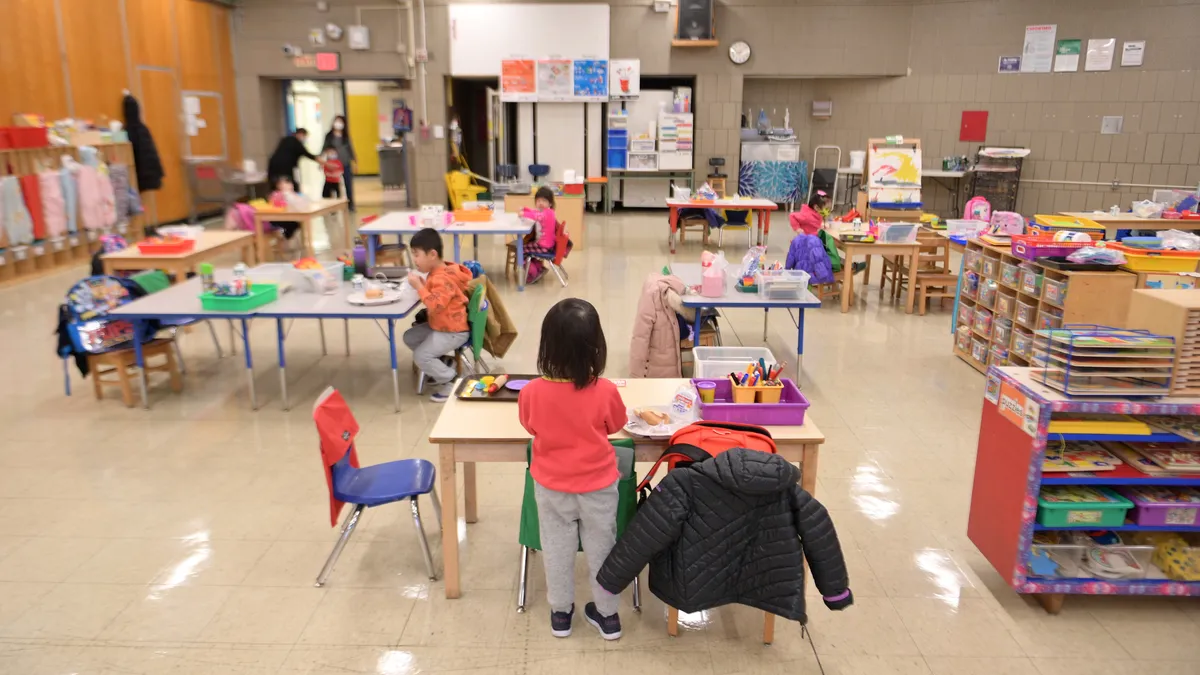The demographics of the U.S. school-aged population, representing ages 5 through 17, are projected to grow more diverse across racial and ethnic identities over the next three decades, according to recent research by the Civil Rights Project/Proyecto Derechos Civiles at the University of California, Los Angeles.
By 2050, researchers project that non-Hispanic White children will make up 42% of the school-aged children, compared to 50% in 2020. This population was the only group to have a projected decline across racial and ethnic backgrounds.
Meanwhile, Hispanic students are projected to comprise 29% of school-aged children in 2050, Black students 17%, Asian and Pacific Islander students 7%, and students who are multiracial and represent other identities 4%.
Though the share of students is expected to increase in diversity, the UCLA report found declines in the number of students speaking a non-English language at home, especially among Hispanic and Asian/Pacific Islander students. The number of children with immigrant parents is also projected to drop, particularly among Hispanic and Asian students.
Researchers project that more Hispanic students will earn a college degree or more, though this rate of obtaining higher education degrees will still remain “well below” the level of White and Asian students. At the same time, the UCLA report said, it’s likely that existing trends in college attainment gaps for Black students will persist.
Here are some other standout numbers from the UCLA study that school administrators and educators may anticipate over the next three decades.









